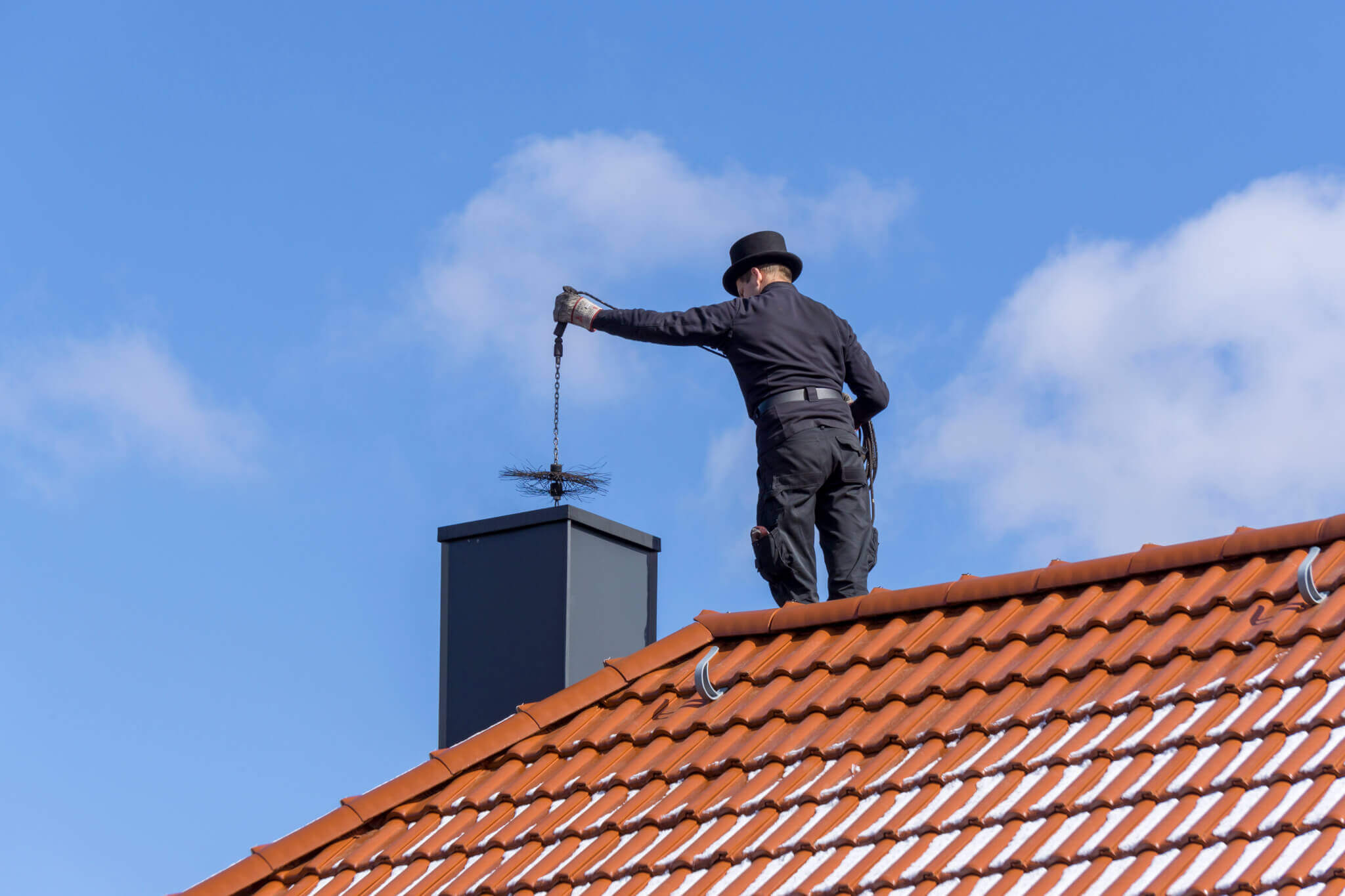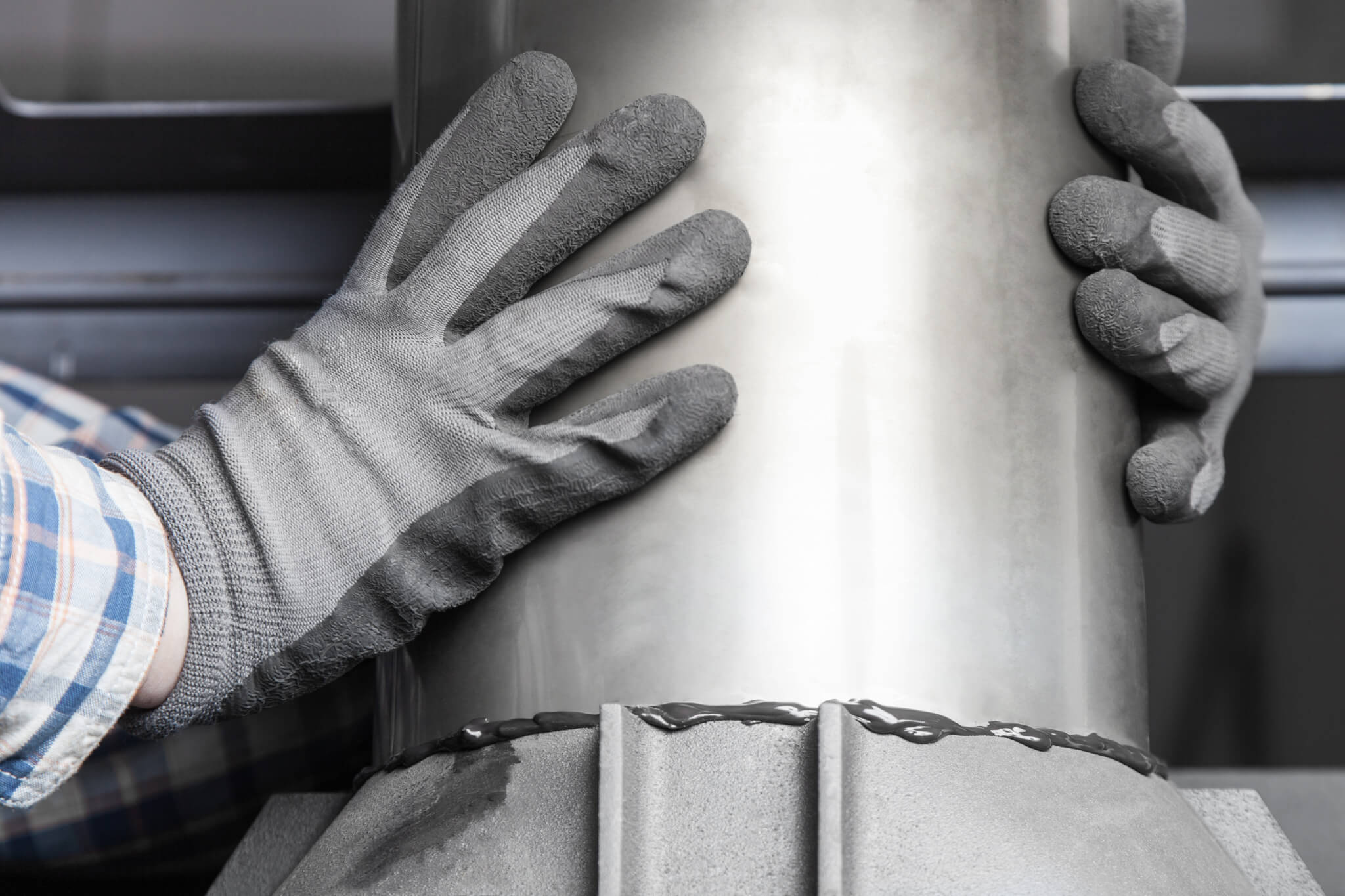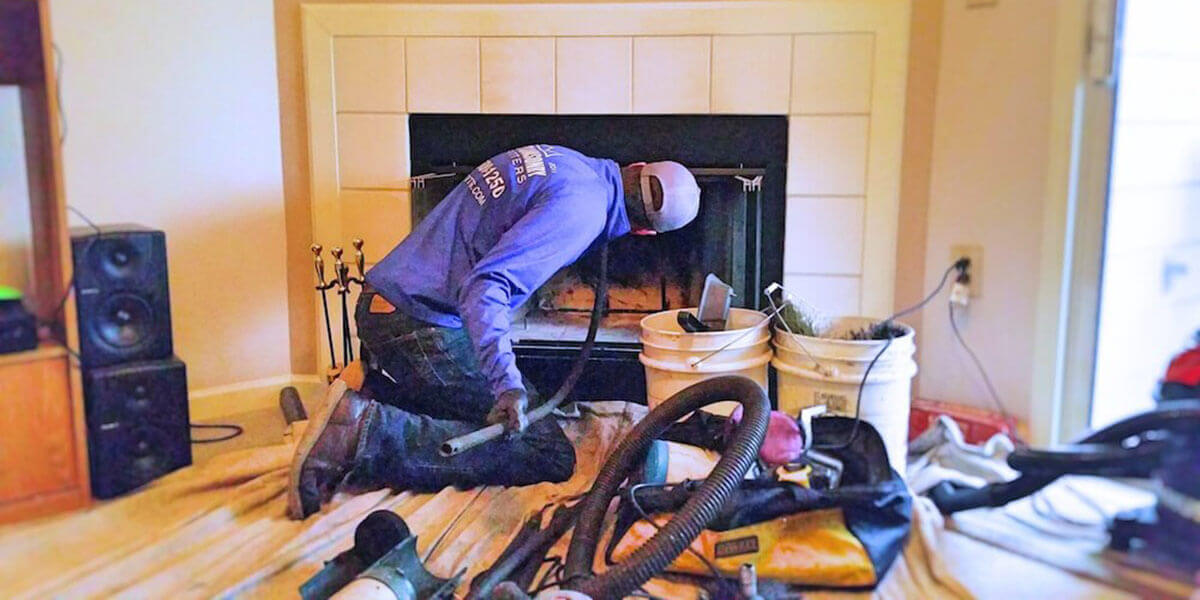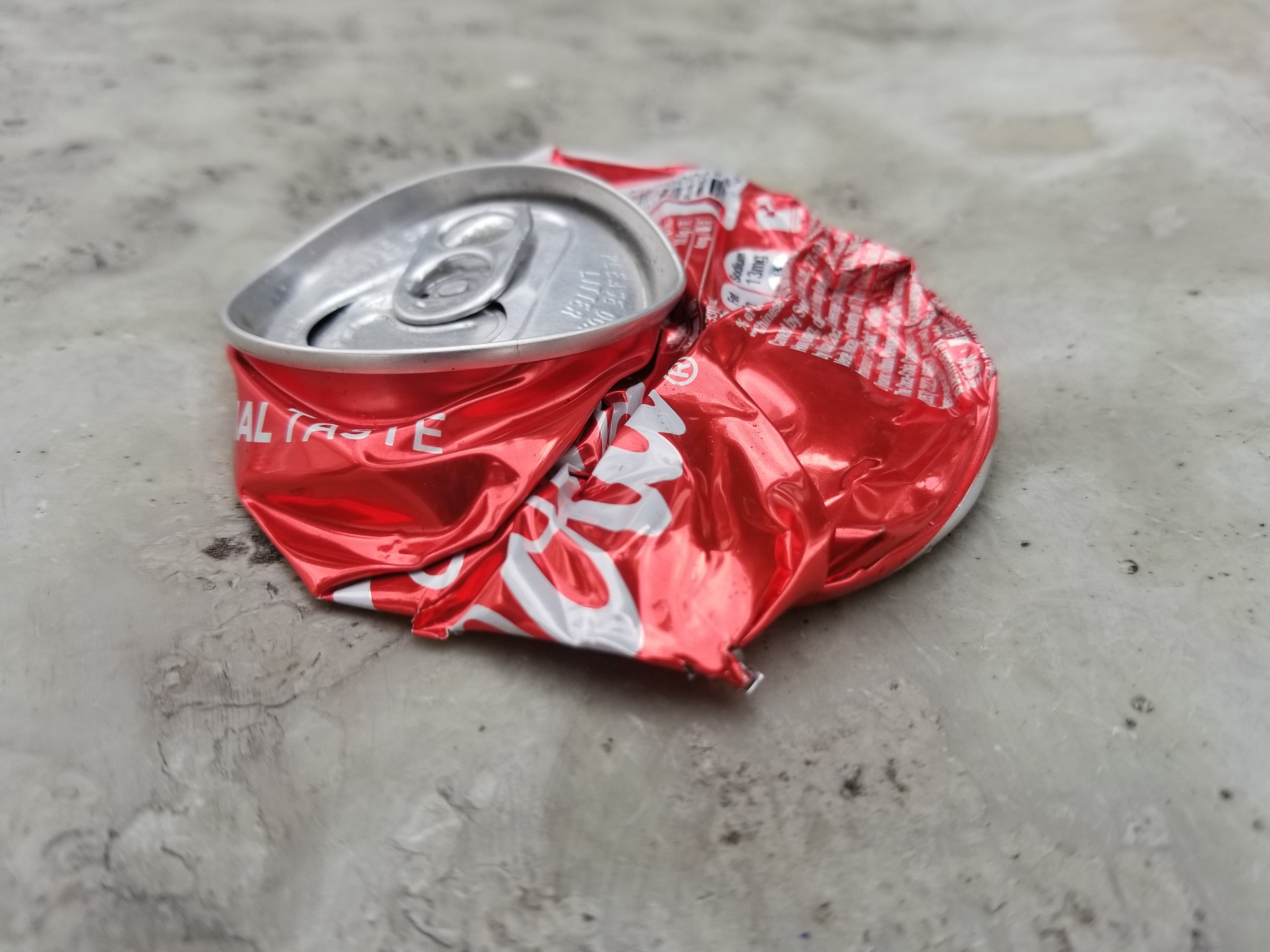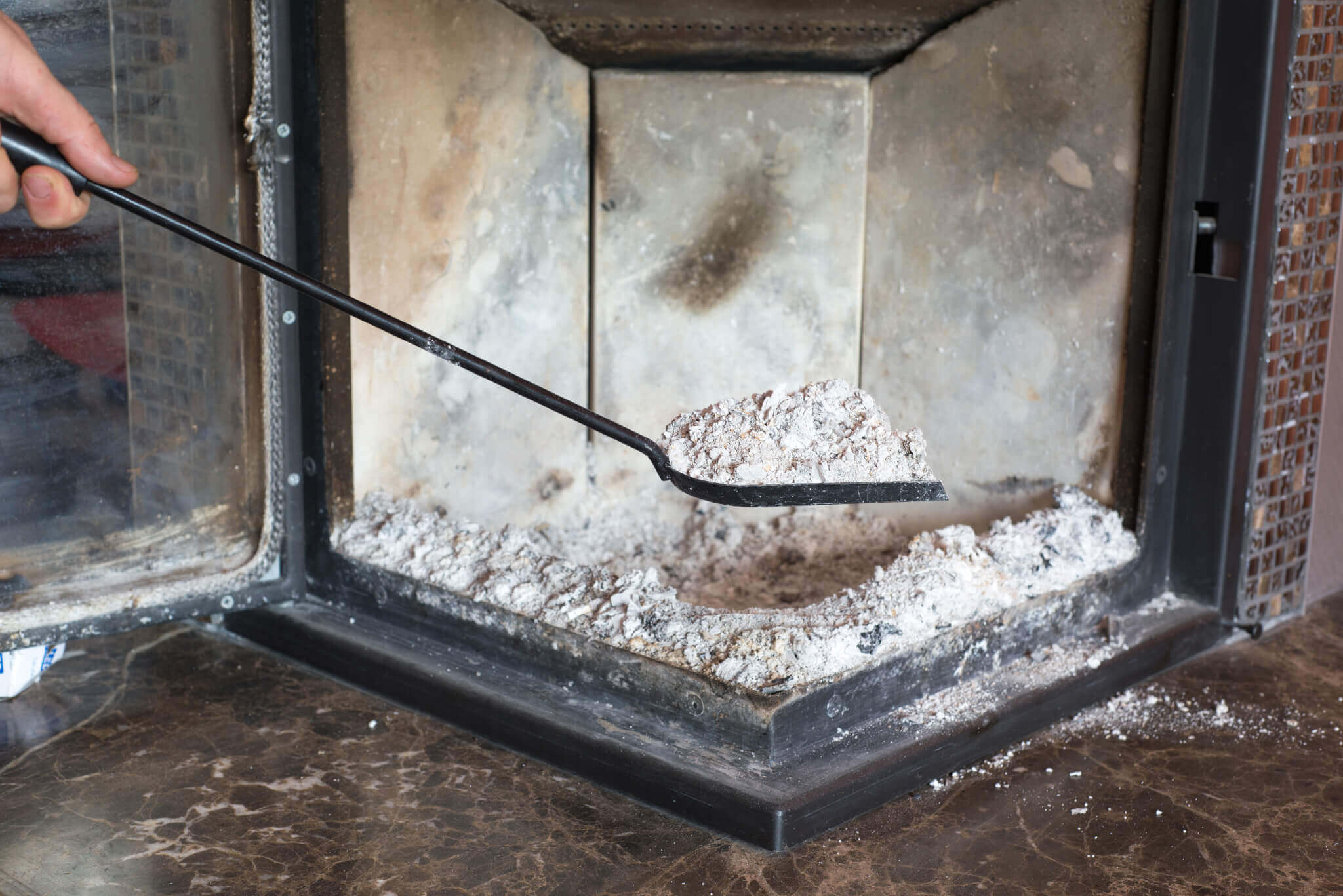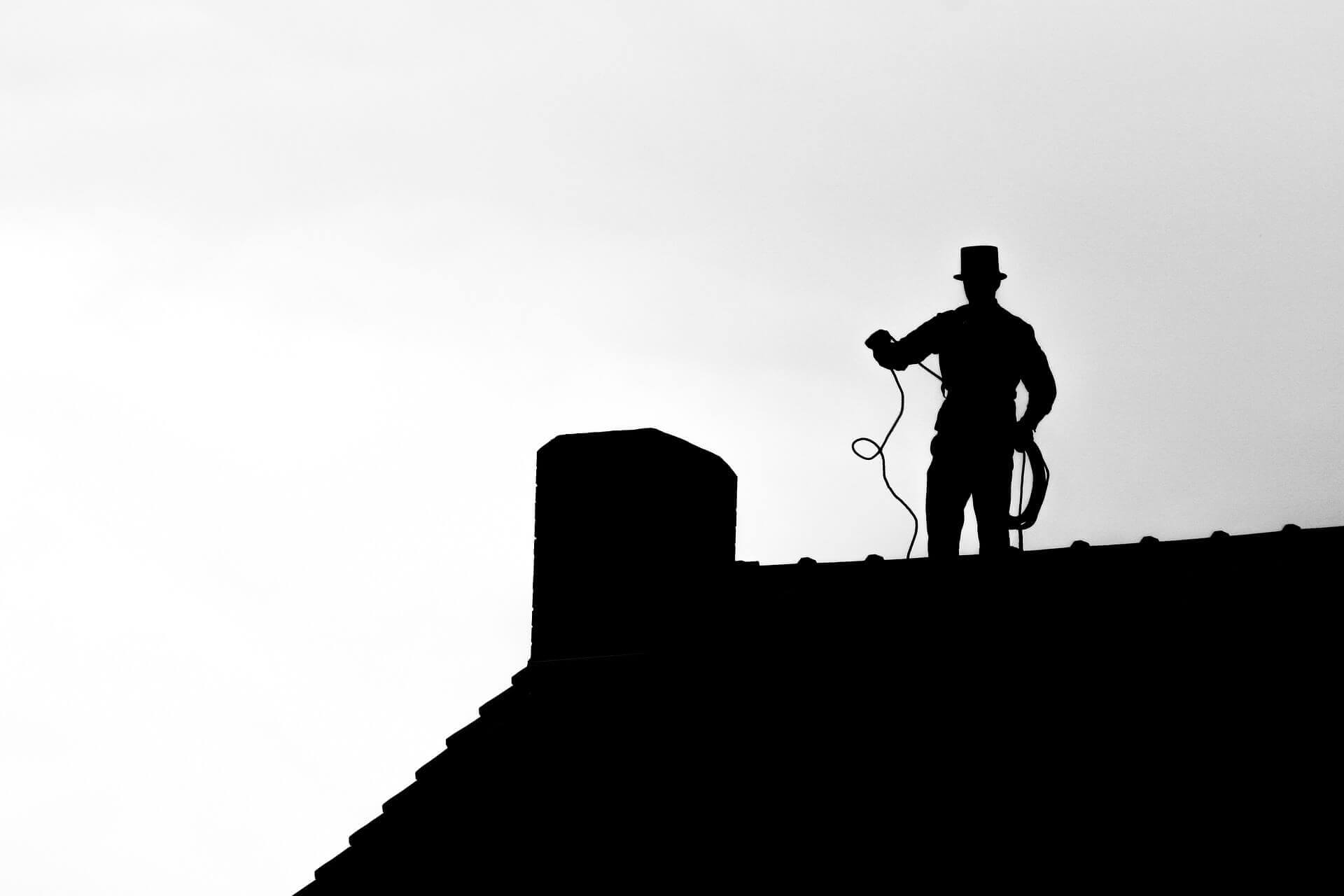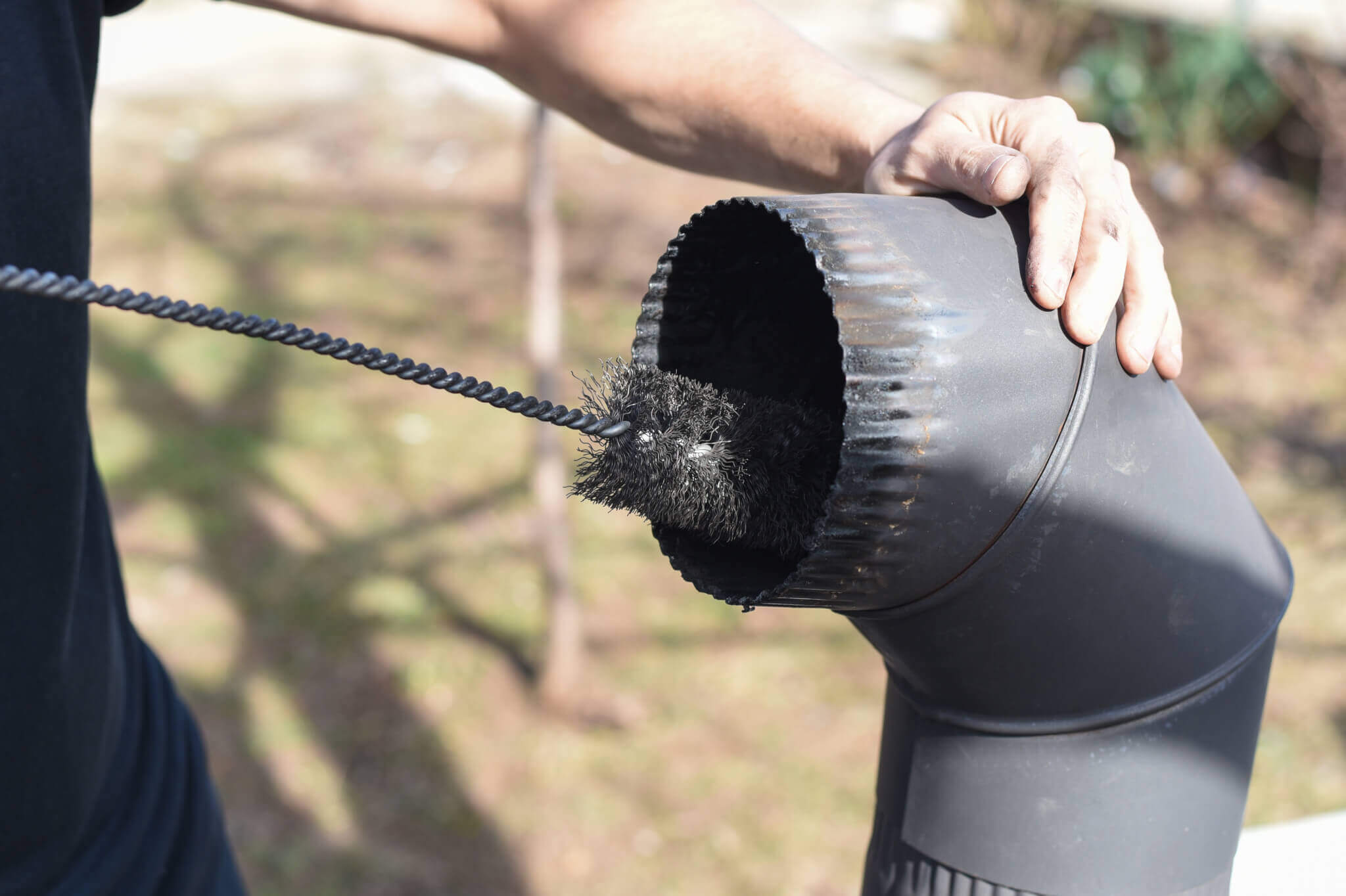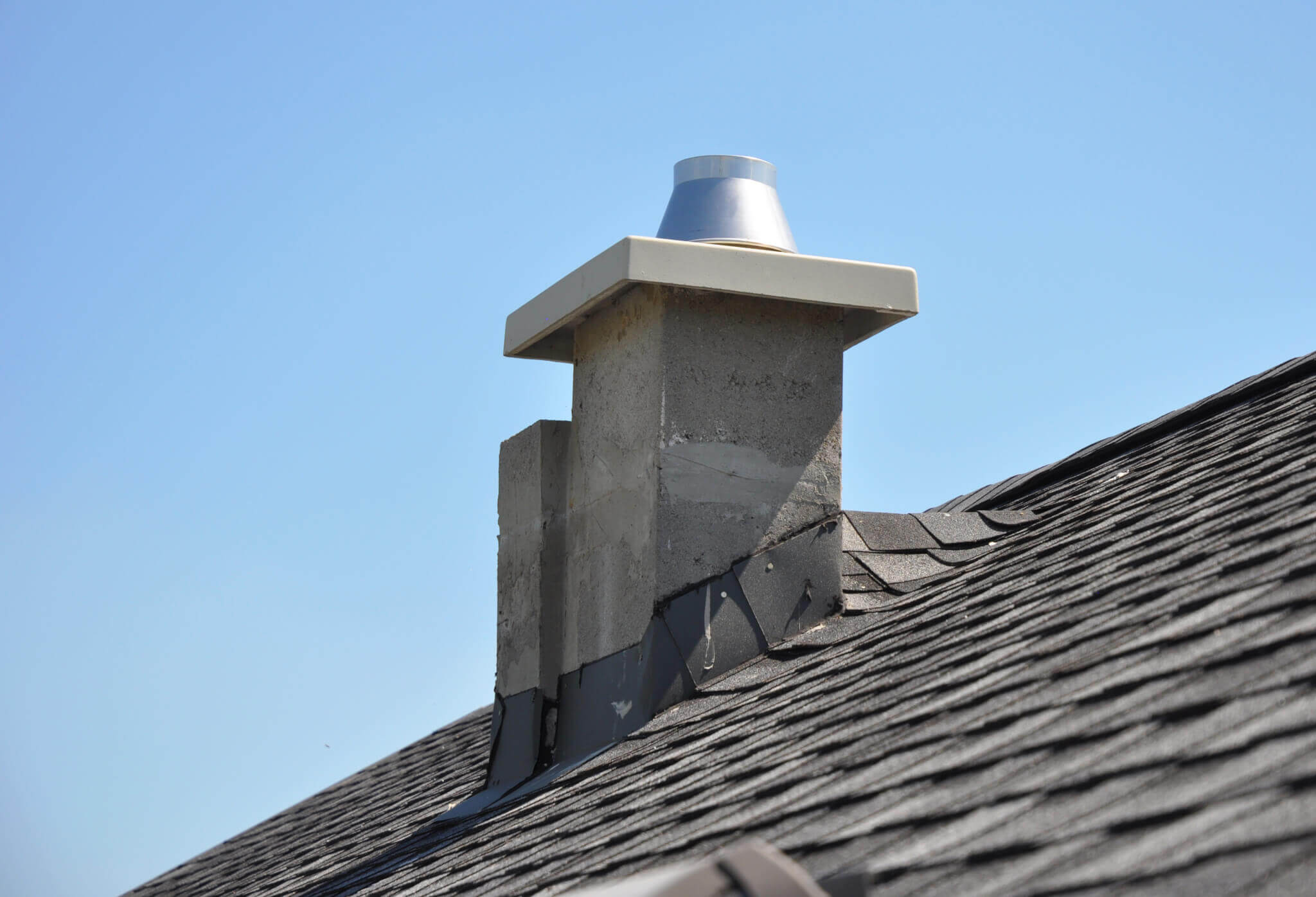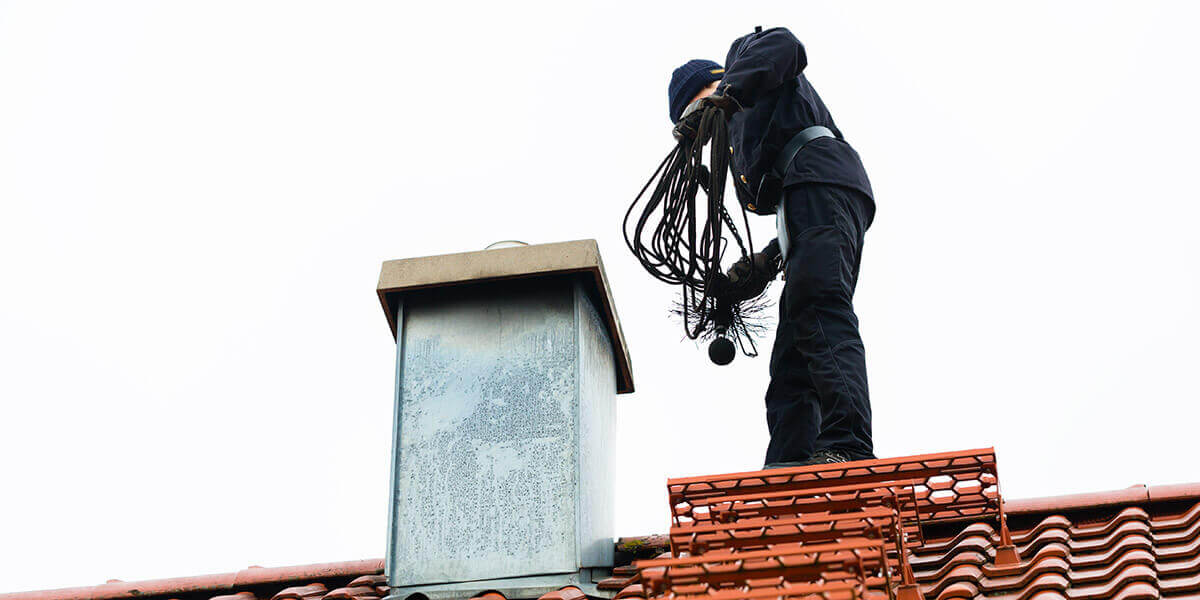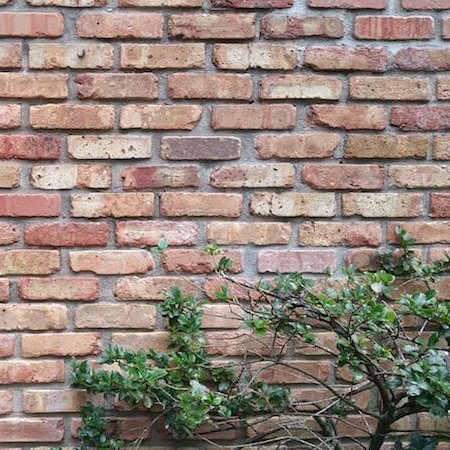Are Chimney Sweeps Actually Lucky?
When it comes to lucky symbols and talismans, chimney sweeps are right up there with four-leaf clovers, horseshoes, and the number seven. Chimney sweeps have long been considered a symbol of good luck; shake a chimney sweep’s hand, and some might consider you the luckiest person alive. But why? What is it about chimney sweeps that makes them supposedly so lucky? Read on to learn more.
Roots in Folklore
King William and the Out-of-Control Carriage
In a tale from 1066, King William of Great Britain found himself directly in the path of an out-of-control, reckless carriage. Legend has it that a chimney sweep, alert and on the scene, pushed him out of the carriage’s path and saved his life. King William then invited the chimney sweep to his daughter’s wedding and declared that all chimney sweeps are good luck.
King George and the Frightened Horse
Centuries later in the 1700s, King George III was in a similar incident involving both a carriage and a chimney sweep (perhaps carriages are in fact unlucky?). While riding along, the King’s horse was frightened and the carriage jolted dangerously, almost tipping over. Luckily, a chimney sweep was standing nearby and steadied the carriage, sparing the King from a serious accident.
After this incident, King George added his own declaration that chimney sweeps are good luck. It is also rumored that he then bestowed on all chimney sweeps permission to wear tophats, making them the only working-class citizens who had this honor.
The Falling Chimney Sweep
In another legend, which surprisingly does not include a king or a carriage, a chimney sweep slipped and fell off of a roof. He was able to grab onto a gutter and hold on, be he was in deep trouble. A woman spotted him and pulled him inside to safety. After this, they fell deeply in love and later married.
Because of this story and King William’s story from 1066, you might want to consider having a chimney sweep at your wedding for good luck. Reportedly, Prince Philip even made sure to shake a chimney sweep’s hand before marrying Princess Elizabeth (Queen Elizabeth II) in 1947.
Are We Lucky? Come See!
You will have to decide for yourself whether chimney sweeps are a lucky charm. But, luck or no luck, hiring a chimney sweep bodes well for your safety at home. Our chimney sweeps are friendly and dedicated to keeping your chimney clean and safe. And who knows, maybe they’ll bring you some good luck!
The Dangers of a Cracked Chimney Flue
The chimney flue, also known as the chimney liner, serves several important functions, all of which influence the safety and overall performance of your chimney. Damage of any kind--cracks in particular--can present an urgent safety hazard, and you will need to repair it before you can use it again.
Why Is It Important to Clean Your Chimney?
Although cozy evenings in front of your fireplace are irresistible, you need first to ensure that it’s safe. You do this by conducting regular chimney sweeps. A chimney sweep helps remove soot, built-up creosote, and other blockages.
According to a recent report by the National Fire Protection Association, the leading cause of home heating fires was failure to clean the chimney. It takes a surprisingly small amount of creosote to cause a chimney fire. Creosote is a highly flammable substance that builds up in the chimney due to burning wood.
7 Reasons to Sweep Your Chimney
Apart from preventing chimney fires, there are other reasons why you should sweep your chimney, including:
Removing obstructions and pests
Just like gutters, chimneys can also get clogged with debris and animal nests. Bats, birds, and squirrels like making their homes in chimneys, especially during summer and spring. If you light a fire when debris or an animal nest blocks the flue, you could spark a fire.
Keep in mind that building a big fire to burn away obstructions or smoke out the animals can be potentially dangerous and can even lead to a house fire. Instead, consider a certified chimney sweep to remove animals, debris, and nests.
Protecting your health
Whenever fuel is burned, carbon monoxide (CO) is produced. If the chimney is blocked when you start a fire, the smoke won’t escape completely. Instead, it will come back into the house and increase the chances of carbon monoxide poisoning. Even at low levels, carbon monoxide causes dizziness, headaches, confusion, nausea, and fainting.
According to the U.S. Department of Housing and Urban Development (HUD), carbon monoxide causes thousands of deaths every year in the US alone. This is why you should have your chimney inspected and swept to ensure that the flue is clear before you can use your chimney.
Discover structural problems or hidden damage
All components of your chimney, including the bricks, mortar, flue, damper system, and crown should be in good condition to shield your house from fire, carbon monoxide poisoning, and water damage. However, chimneys are exposed to severe weather, corrosive chemicals, and high temperatures. Therefore, they are prone to deteriorate or even get damaged. Most chimney problems aren’t easy to notice until the problem worsens and becomes more expensive. Without a professional chimney sweep and the right tools, it may be difficult for you to assess the condition of your chimney.
Prolong the life cycle of your flue liner
The first line of defense of your chimney against CO poisoning and house fires is the flue liner. It insulates the chimney from high temperatures and corrosive chemicals. It also prevents carbon monoxide and sparks from slipping into your house through cracks. However, because creosote and soot trap moisture that oxidizes the liner, their buildup can deteriorate the flue liners. Conducting a professional chimney sweep every year will help preserve the flue liner.
Meet your homeowner’s insurance requirements
Are you aware that your homeowner’s insurance requires that you conduct an annual inspection and chimney sweep? While this is a common requirement, most homeowners don’t know about it until it’s too late. Your homeowner’s insurance policy won’t cover your home for damage caused by a fire if you don’t have proof that you have conducted a professional chimney sweep and inspection.
Ensure that you take a look at your homeowner’s insurance and see whether it is a requirement. If it is, ensure that you get the right documentation after conducting a chimney sweep.
Improve efficiency
Whether you want to reduce the heating costs or you’re concerned about the environment, your stove or fireplace should remain efficient. When fuel is burnt efficiently, it creates less smoke and more heat. Therefore, you can maintain a good house temperature without necessarily overloading your fireplace. Additionally, the fire will produce less harmful emissions.
Prevent soot falls
Over time, by-products of coal and burning wood will rise and cling to the inside of the chimney. The soot may continue to gather until it falls. Apart from creating a mess, the soot may build up into creosote, which is very dangerous. Creosote may cause an internal chimney fire that may burn through the walls and into your home. Additionally, creosote contains harmful chemicals that aren’t safe to breathe.
Consult a Professional
Scheduling a chimney sweep will improve your stove or fireplace efficiency. A professional chimney sweep will remove barriers that may cut or limit the oxygen supply needed for a fire to burn well. Make it a habit to schedule a yearly chimney inspection and cleaning.
A regular chimney inspection can help you identify and fix problems before they become more serious. If you are looking for an experienced and CSIA-certified chimney sweep in the greater Indianapolis area, visit Brick + Ember Outfitters today or call 317-500-1250 to schedule your sweep.
Does Burning Aluminum Cans Clean Your Chimney?
If your home has a wood-burning fireplace, creosote will inevitably build up. Brick + Ember Outfitters has provided trusted, reliable chimney cleaning service to homeowners in Indianapolis, IN and across the U.S. since 2011.
Our customers trust us to educate, empower, and equip them with the tools they need to improve the value of their homes, whether that is through routine chimney and fireplace maintenance or by making necessary restorative repairs.
As a professional chimney sweep company, we know all the tricks to preventing or getting rid of creosote buildup in your chimney. This article will debunk one of these myths and provide you with safe solutions for preventing creosote from accumulating in your fireplace.
What is Creosote?
Creosote is the natural byproduct of wood that burns in a fireplace or wood-burning stove. Creosote can collect over time in the chimney flue which could eventually result in a devastating chimney fire. This is why it is important to perform regular maintenance on your chimney to remove creosote buildup.
Burning Aluminum Cans To Clean Your Chimney
Many have claimed that burning aluminum cans is an effective technique to clean your chimney. Though there may have been cases where this method has worked slightly, nothing takes the place of actually cleaning out the chimney.
In fire tests conducted on aluminum materials, it was found that when fire temperatures exceed the melting point (which occurs at a range of 600-660°C), aluminum surfaces that are exposed to the fire can melt, but do not burn. Heating the cans causes an increase in heat in a chimney which can help prevent creosote from building up on a clean chimney. However, aluminum oxides are very stable and do not react to high temperature. This means that there will not be much of an impact on built-up creosote.
Our professionals at Brick + Ember Outfitters recommend that homeowners get their chimney system serviced at least once a year. A chimney sweep is vital to protecting the health and safety of your family and home.
How to Avoid Creosote Buildup in Your Fireplace Chimney
Use Efficient Burning Techniques
To help prevent creosote from building up in your fireplace, it is important to use efficient burning techniques. For example, burn small, hot fires using hardwood. This will reduce the amount of creosote that accumulates in your system, while also maximizing heat output. You should ensure that your fires are kept burning hot with flames, rather than smoldering, which can create an excessive amount of smoke.
You’ll also want to take care not to add too much firewood. Make sure that the top of the flames remain visible right below the opening of the fireplace. As a rule of thumb, it’s better to add smaller loads more frequently than to try cramming in too much wood in order to get a fire that will burn all day.
Once you’re ready to extinguish your fire, you should separate the logs by pushing them towards the side of the fireplace. You can also stand them on the end at the back of the fireplace. Once this is done, close the screen, but do not shut the damper until you are certain that the fire and coals have been put out completely.
Warm Your Flue Before Building Your Fire
Warming your flue before building your fire is important, especially if your chimney is made from metal or is located on an outside wall of your home. This is because it’s likely that your home will be colder when the temperature outside starts to drop during the winter season.
A simple way to do this is to roll up a piece of newspaper and light it, holding it under the damper until the air surrounding the area begins to warm up. Starting a fire in a cooler flue can cause poor combustion and lead to more creosote buildup in your system.
Cleaning Chimney Services in Indianapolis, IN
If you have an older fireplace with a vent inserted into a masonry chimney, it’s always best to contact a chimney professional like those at Brick + Ember Outfitters. We will conduct a full inspection of your flue to ensure that it is functioning properly. If a flue is too large, it can cause smoke to linger in the chimney for much longer than it should, creating excessive creosote buildup.
Contact Brick + Ember Outfitters to schedule your annual chimney inspection and cleaning. Proper service of your chimney is necessary to extend the life of your system. It is also an important measure to take to prevent a potential chimney fire from destroying your home.
Have additional questions you’d like to ask regarding our services? Give our team a call at 317-500-1250 to schedule a free consultation. You can also email us directly at office@brickandember.com or fill out our online contact form.
How Do You Know When Your Chimney Needs Sweeping?
Most homeowners know that they need to check their chimney regularly for any safety hazards. But how do you really know when it’s time to have your chimney swept? Read on to learn how to look for signs that a chimney sweeping is needed.
Why Chimney Sweeping Is Important
Having your chimney swept regularly keeps your home safe and your fireplace functioning correctly. Regular chimney sweeping can also keep your chimney from long-term damage, such as water penetration or deterioration of the brick or stone.
But most of all, having your chimney swept keeps it clean. It clears away debris, keeps away critters, and removes any creosote that has built up on the walls. Having a clean chimney isn’t just about appearance or even functionality. Debris or creosote buildup can be very unsafe, causing fires or allowing carbon monoxide to enter your home.
Even if you don’t use your chimney regularly, it is a great hiding place for small creatures looking for a warm place to live. Having your chimney swept regularly is the way to make sure your chimney is functional and your home is safe.
What Happens When a Chimney is Swept
So what does it mean, exactly, to have your chimney swept? Chimney sweeping probably isn’t at the forefront of your everyday to-do list, so it might be a bit of a mystery as to what it means to have your chimney swept in the first place. But there’s no need to worry; having your chimney swept is actually quite simple. Chimney sweeps are professionals who use metal rods tipped with a brush-like object to clean your chimney.
These rods are used to scrape debris and buildup from the sides of your chimney. Then chimney sweeps will clear out your fireplace, removing the soot, debris, and buildup they scraped off of the walls. After this, your chimney will be fully swept and your home will be safe and free of chimney fire-hazards.
5 Signs Your Chimney Needs Sweeping
Professionals suggest that chimneys be swept at least once a year, but varying factors may cause your chimney to need a sweep even more frequently. If you’re wondering whether it’s time to hire a chimney sweep, looking for these signs is a good place to start.
1. Smoke builds up in your home when using the chimney.
In a properly functioning fireplace, smoke should immediately rise and exit through the chimney. If you notice any smoke in your home while using your fireplace, this means you have some sort of blockage in your chimney. A blockage could be from debris, creosote buildup, animal nests, or a malfunctioning damper. A chimney sweeping will remove the blockage and have your chimney back up and running in no time.
2. You notice creosote buildup in your chimney.
When wood burns, not all of it turns into ash. Creosote is the remaining fuel, and it sticks to chimney walls. Once enough creosote has built up in your chimney, it can become a serious fire hazard. Creosote is flammable, and if it’s covering your chimney walls it is a disaster waiting to happen.
To check for creosote, shine a flashlight up your chimney and look for dark, rough patches on the chimney walls. If the walls do not appear smooth, there is likely buildup and your chimney needs to be cleaned.
3. There is evidence of animals living in your chimney.
Chimneys are dark and sheltered, a perfect opportunity for any small critter looking for a place to call home. Of course, you probably don’t want to share your home with these creatures, and they probably don’t want the surprise of smoke and fire in their newly-made nest. If you hear scuttering or rustling in your chimney, or notice nests of leaves and branches, chances are you have some new friends that need to be relocated. Animals can cause blockages and other fire hazards, so you should call a professional if you suspect they might be occupying your chimney.
4. You have difficulty starting a fire.
Chimneys are designed to have the correct amount of airflow for a fire to start and be maintained safely. If you have difficulty starting a fire or keeping a fire going, this probably means there is a blockage in your chimney and you should contact a professional immediately.
5. Foul odors are coming from your chimney.
If foul odors are emanating from your chimney, this is a definite sign that it’s time for a sweep and inspection. When your chimney is not in use, it should not leave any odors. When a fire is burning, odors should be limited to the refreshing smell of a warm, crackling fire. Any other odors might indicate that there are toxic gases entering your home from your chimney. These typically come from creosote buildup and can be very dangerous. A chimney sweep will remove the buildup, eliminate odors, and keep your home safe from toxic gases.
Do any of these signs seem familiar? If so, it’s time to contact a chimney professional and have your chimney swept. Visit our website to learn about our chimney sweeping and inspection services!
Why Did Chimney Sweeps Wear Top Hats?
When thinking of a chimney sweep, we instantly picture Mary Poppins’ right hand man, Bert. But before Bert and his well known cap, the chimney sweeps wore traditional black, a classic top hat, and maybe even tails.
Why dress up to clean up? There are many legends behind the reason chimney sweeps wear top hats. Although not as common anymore, the image persists.
History of the chimney
Back when cities started modernizing and urbanization was an ever-crawling phenomenon, the development of two-story homes changed the way we stayed warm forever. Specifically, the chimney was invented so that people could enjoy warm fires with inhaling all that smoke; the smoke to escape from the top of the building.
However, smoke turned out to be just one of a few concerns. People soon realized that the build-up of soot and creosote was causing dangerous chimney fires. The Great Fire of London in 1666 spurred some changes to chimney construction and keep-up. People made chimneys smaller, and the noble sweep helped maintain these chimneys.
But how were they to fit up these tight spaces in order to clear out the soot? Soon the practice of using children for the job was commonplace.
This is where our legends begin.
#1. Hand-me-downs
This story says that beginning in the 17th century, funeral directors would take pity on these poor children being forced to crawl up chimneys. To help raise both their status and their morale, they gave them the extra top hats that would have otherwise been disposed of.
#2. A gift from royalty
During the 1700s, King George was riding along on his horse when he came upon a barking dog. The horse was startled and would have kicked about dangerously if it wasn’t for a chimney sweep who grabbed the reins. Thankful for the help, the King claimed that sweeps would be considered lucky from then on, granting him the special privilege of wearing the symbol of the gentry: a top hat.
True or False?
Maybe one or both of these legends are true, maybe not. What we do know is that the hats were not only practical, helping brush soot off the walls of the chimneys, but they were also a source of pride and respect for the hard-working sweeps.
Today, sweeps are as hardworking as ever—and needed just as urgently! Remember to get your yearly chimney inspection with the help of Brick + Ember Outfitters in Indianapolis.
How Long Does a Chimney Sweep Take?
Every flue is different, so it is hard to put a universal time on chimney sweeping. However, on average, a thorough cleaning should take about 45 minutes to an hour. This time can increase substantially if there is creosote present in your flue, if the flue is damaged in any way, or if there are blockages such as birds’ nests. If your chimney cleaning requires more time, it’s good to ask and understand why.
Even if you don’t use the fireplace in your home very often, it is still important to get your system serviced at least once or twice a year. Keeping your fireplace maintained on a regular basis not only gets rid of creosote and other harmful debris, but it also improves the overall air quality of your home.
Your chimney sweep will give important information regarding the health of your system and make recommendations about how to improve its performance. It’s always best to make your appointment before the autumn months begin. This will ensure that you can operate your fireplace worry-free as soon as the temperature gets chilly!
What to Expect
Your chimney sweep will use a long rod with heavy metal bristles around the tip to clear your chimney of debris, gunk, and creosote that may be clogging your system. He or she will lay down a drop cloth or sheets of plastic to help protect your home, and use a small vacuum to help remove dust and debris.
They may start by cleaning the flue and moving up the chimney, or they may start at the chimney and move their way down towards the flue. Your technician will focus on scraping away any buildup that has accumulated from fires over time.
How to Prepare for your Service
Before the technician arrives to service your fireplace, be sure to remove any furniture or other objects that may prevent your chimney sweep from easily accessing the area. Many companies may offer to perform an inspection to take place at the same time as the cleaning.
During the inspection, they will look for any signs of cracks or other damage to the structure. If it is determined that repair work is needed, or if additions like a chimney cap are installed, this can extend your overall cleaning time.
Ready to Hire a Fireplace and Chimney Specialist?
Schedule a chimney sweep today! Call 317-500-1250 to make your appointment and receive a free service quote.
Do Stainless Steel Chimney Liners Need Cleaned?
If you use your chimney often, you need to clean it frequently even if you have a chimney liner. The chimney liner is one of the most essential parts of your chimney. When you don’t clean it, soot, dust and dirt will accumulate, which can cause multiple problems. Although the chimney liner can provide your flue with extra protection, the buildup of water, creosote, and other contaminants can deteriorate the liner and make it unsafe to use.
Why You Should Clean Your Stainless Steel Chimney Liner
Contrary to popular belief, chimneys with liners require the same amount of cleaning as unlined chimneys. Some of the dangers of a dirty stainless steel chimney include:
Carbon monoxide poisoning
According to NCBI, carbon monoxide is on the rise, and it mainly originates from heating systems that are poorly ventilated due to dirty chimneys.
Creosote buildup
If you use wood as your main source of fire, then most likely your chimney contains creosote. Creosote occurs naturally in the wood-burning process as a by-product of combustion. Creosote is highly combustible, and buildup may cause a fire.
Why is a Chimney Liner Important?
Although chimney liners are an important part of the chimney, most homeowners aren’t aware of them. This is mostly because they can last for a very long time – over 50 years. Some of the benefits of a stainless steel chimney liner include:
Protect your home from fires
The most crucial function of a stainless steel chimney liner is to prevent the risk of a home fire. Although chimneys are designed with materials that can’t easily catch fire, they are attached to your home. This means that combustible framing next to the chimney can easily ignite. The stainless steel chimney liners regulate heat transfer and prevent fire hazards.
Protects your masonry
While you may think that bricks are strong and solid, they are quite porous. Therefore, when you have an active flame, the combustion releases a variety of corrosive by-products. Over time, the corrosion may eat away the mortar and encourage rapid heat transfer to other combustibles. Such a case can cause dangerous problems like hazardous carbon monoxide leaking into your house.
Sizes the flue
Modern stoves and fireplaces are designed with a specific flue size. However, homes that were not designed by a certified chimney sweep may have a tall or wide chimney that may not vent the fire adequately. Ensure that you get a new liner installed by a professional.
A Chimney Inspection is Important!
Water, gases, soot, unburned particles, and creosote exit through the chimney liner. Maintaining your stainless steel chimney liner will increase its lifespan, and provide the best airflow. Ensure that you have your chimney liner checked by a CSIA-certified professional from Brick + Ember Outfitters at https://www.brickandember.com/.
Do I Need My Chimney Cleaned?
A chimney clean, more commonly known as a chimney sweep, removes the creosote or other buildup in a chimney’s flue to prevent hazardous fires and to aid in the efficiency of your chimney’s function. While the description might call up imagery of Victorian England rather than Indianapolis, Indiana, keeping your chimney clean is as important now as it’s ever been.
What We Can Do for You
Chimney cleaning is what we do, and we take great pride in it. We ensure that you can enjoy safe, cozy fires in your fireplace/chimney all winter long. Our goal is to bring you peace of mind in your own home.
If you don’t use your chimney frequently, you might be inclined to forget about your chimney altogether. Why clean something that you rarely use? Even if you don’t enjoy sitting around your fireplace, cleaning the chimney can reduce the risk of flue fires and make your air safer by improving carbon monoxide ventilation.
Beyond that, we all know that there’s plenty of wildlife living in the Indianapolis area, and plenty of those critters would love the chance to make a home in your unused chimney. To make sure you aren’t hosting a family of squirrels, raccoons, or others, it’s important to clean your chimney at least once per year.
We Are Certified
It is of great importance to ensure that your Chimney Sweep is certified by the Chimney Safety Institute of America (CSIA), proficient in industry regulated cleaning standards and proper inspection practices of your chimney. When you have your chimney cleaned, you want to be certain that it’s done right.
The sweeps at Brick + Ember Outfitters are all certified by the
CSIA and are prepared to address any chimney-related concerns which may arise during an assessment of your chimney or fireplace. Feel free to reach out to our professional cleaning team with any questions or concerns you might have.
When to Call Us?
Industry professionals do recommend a chimney be swept and inspected, at
least once, annually. The safety and functionality of your chimney is
extremely relevant and important to the safety of your home and family. You can keep your house safer from fires and carbon monoxide, as well as animal-free, by calling in our services just once a year.
6 Common Signs You Need a Masonry Repair Expert
While masonry is a stunning feature of your home or business, the wear and tear from Indianapolis weather can take its toll. Natural changes like soil shifting and settling can severely damage your masonry foundation. Given the intense Indianapolis seasons, you should carefully monitor the masonry on your home or business. Masonry and brick that are poorly maintained are likely to suffer even more costly damage that could permanently affect your home. Dealing with any brick or stone masonry issues early will prevent larger problems from taking hold. We’ve created a guide for determining when you need to consult a masonry repair expert.
Signs You Need Masonry Repairs
Deteriorated or Missing Mortar
Most brick or stone masonry walls require repointing every 15-20 years, and other factors may lead to earlier repair. When mortar deteriorates or buckles, it can be incredibly detrimental to the masonry structure. Bricks without sufficient mortar may rub against each other and warp. However, mortar repair is not an at-home project. Using the incorrect mortar or faulty application will lead to earlier wear and more problems. Only trust an experienced masonry contractor with mortar repair.
Frost Boil
Frost boil, or bulging bricks, occurs when moisture seeps behind your brick masonry and disrupts the backing. This pushes or pulls the bricks causing them to bulge. Frost boil is a common occurrence in areas, like Indianapolis, that have freeze-thaw cycles. To resolve this issue, masonry contractors will need to remove any affected bricks, repair the underlying damage, and lay new bricks.
Bowed Bricks
Compacted bricks are altered from their original shape. Cracked or bowed bricks let water enter and damage your home. Many times, one compacted brick is a sign that there will be many others. To solve this issue, a masonry contractor needs to replace all affected areas and may need to add push piers to your foundation.
Interior Damage
Damaged masonry may lead to issues within your home. If you spot moisture buildup on your walls, feel drafts, or see deformed windows and plaster cracks, you may need a masonry repair.
Cracked Bricks
Cracks in brick and stone occur naturally over time. However, cracks at an angle greater than 30º threaten to collapse your masonry structure. Even bricks that are not likely to allow a collapse still affect your masonry. Consult a masonry expert to fill any cracks in order to prevent water from leaking through the cracks or freezing in them during the harsh Indianapolis winter.
Causes of Masonry Damage
Understanding the causes of masonry damage is important for prevention. When possible, you should address the potential causes of masonry damage to help preserve your masonry. Some of the most common causes of masonry damage that may affect your Indianapolis home or business include:
- Vegetation: Vegetation growth can cause immense damage to your brick or stone masonry. Once vegetation is detected as a threat, it should be removed immediately. Make sure to eliminate the roots to prevent regrowth.
- Freeze and Thaw Cycles: The four seasons in Indianapolis are spectacular, but may wear on your masonry. During the warm, wet seasons water may get into any small cracks in your masonry. The cold winters freeze this water which causes it to expand and leave more damage. Make sure to monitor your masonry at the start of each season to assess any effects of freezing and thawing.
- Lack of Maintenance: With so many other responsibilities and concerns, homeowners often forget about masonry maintenance. Annual inspections from a masonry repair expert and timely repair of any small issues preserve the integrity and beauty of your masonry structures.
- Incorrect repairs: Poorly executed repairs of load-bearing or retaining walls can lead to disastrous outcomes. Masonry repair is not a DIY project. Only an experienced mason should perform repairs on your masonry. If you experience any signs of masonry damage, consult a masonry repair expert.
Brick + Ember Outfitters is Your Indianapolis Masonry Repair Expert
Brick + Ember Outfitters has the experience and knowledge to solve all of your masonry repairs. Our experts will evaluate your masonry structures and perform any necessary repairs to keep your masonry operating and looking its best. Preserving your masonry while offering outstanding customer service is our priority. Our masonry contractors have the expertise to handle any of your masonry repairs. Our full list of masonry services for your home or business includes:
- Brick Restoration
- Brick Contractors
- Tuck Pointing
- Cracked Brick Repair
- Patio
Stay on top of your masonry maintenance and repair to prevent long-term damage. Trust Brick + Ember Outfitters to always do an excellent job of taking care of your masonry. If you are experiencing any symptoms of masonry damage, it is time to consult the masonry repair experts at B+E. Just give us a call at 615-645-3545, send an email to office@brickandember.com, or visit our website HERE to set up a masonry inspection. To learn more about masonry, chimney, and fireplace care, visit our blog.

